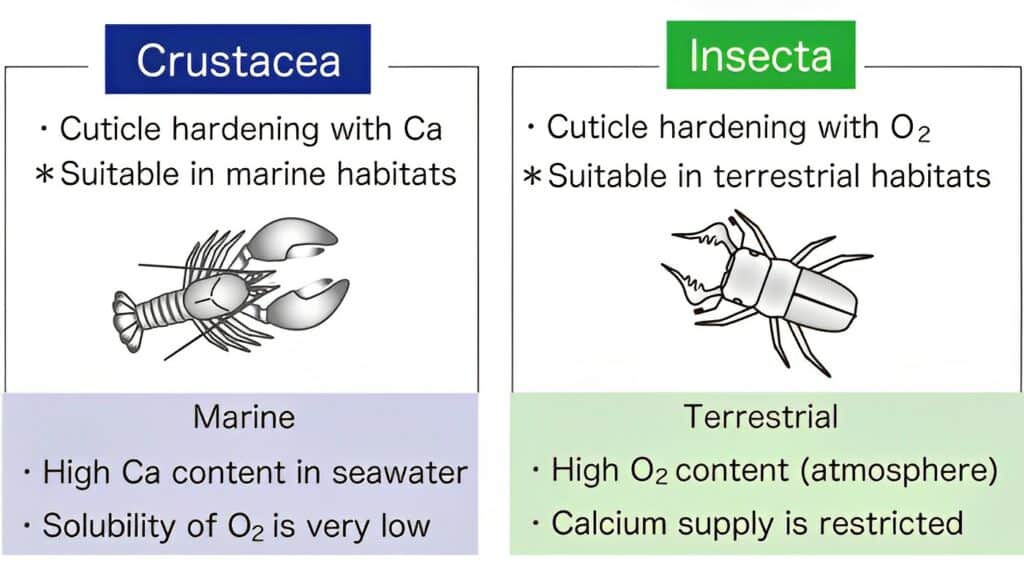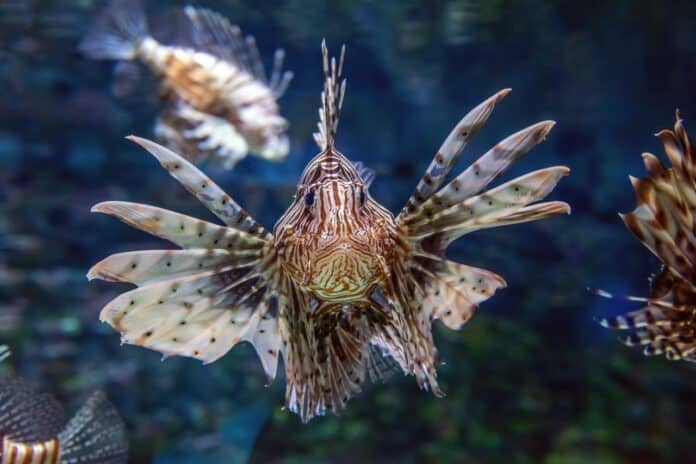Insects are successful organisms on Earth because of the diversity of their species, global biomass, and impact on ecosystems. They are generally categorized as independent phylum within the Arthropoda. They account for the majority of terrestrial animal biomass and considerably impact global ecosystems.
However, their abundance is matched by their astonishing rarity in the sea. Even though their biological ancestors came from the sea, very few insects live there. It is a widespread scientific mystery that scientists have been attempting to solve for many years.
Scientists from Tokyo Metropolitan University have suggested a theory as to why insects are so rare in marine environments. They previously showed that insects acquired a distinct chemical method for hardening their shells, employing molecular oxygen and an enzyme known as multicopper oxidase-2 (MCO2). This disadvantages them in the sea while conferring benefits on land, putting MCO2 at the center of insect eco-evolution.
Researchers from Tokyo Metropolitan University, led by Assistant Professor Tsunaki Asano, have offered an evolutionary genetics-based approach.
The most recent advances in molecular phylogenetics have revealed that crustaceans and insects are members of the same family, Pancrustacea and that insects were a branch that left the sea and adapted to land.
An essential characteristic they have in common is an exoskeleton made up of a wax layer and a hard cuticle.
In earlier research, the same researchers demonstrated that as insects adapted to terrestrial conditions, they evolved a special gene that produces the enzyme multicopper oxidase-2 (MCO2), which helps in the oxygen-based hardening of their cuticles.

The cuticle’s catecholamines are oxidized by molecular oxygen in a process mediated by MCO2, which transforms them into substances that bind and harden the surface. On the other hand, crustaceans use calcium from seawater to harden their cuticles.
According to the team, the availability of oxygen in the air makes the area far more suitable for insects. Due to both the lack of oxygen and an abundance of species that have evolved better, the sea is now a harsh environment.
A biomaterial that is not only protective but also lightweight is produced by the hardening and drying of the cuticle through the MCO2 pathway. This may be why insects evolved the skills to climb plants, glide, and finally fly, enabling them to move around and fill ecological gaps that used to remain empty.
According to scientists, the presence of MCO2 may be a distinguishing characteristic of insects: “no MCO2, no insects.” The study aims to shed new light on the potential role of cuticle hardening in the evolution and terrestrialization of insects.
The conclusion shows that The emergence of insects is an important event in the evolution of life on Earth. However, the relationship between insect evolution and the molecular mechanisms involved in cuticle formation has yet to be fully explored.
Journal Reference:
- Tsunaki Asano, Kosei Hashimoto, R. Craig Everroad, etal. Eco-evolutionary implications for a possible contribution of cuticle hardening system in insect evolution and terrestrialisation.Physiological Entomology. DOI: 10.1111/phen.12406
